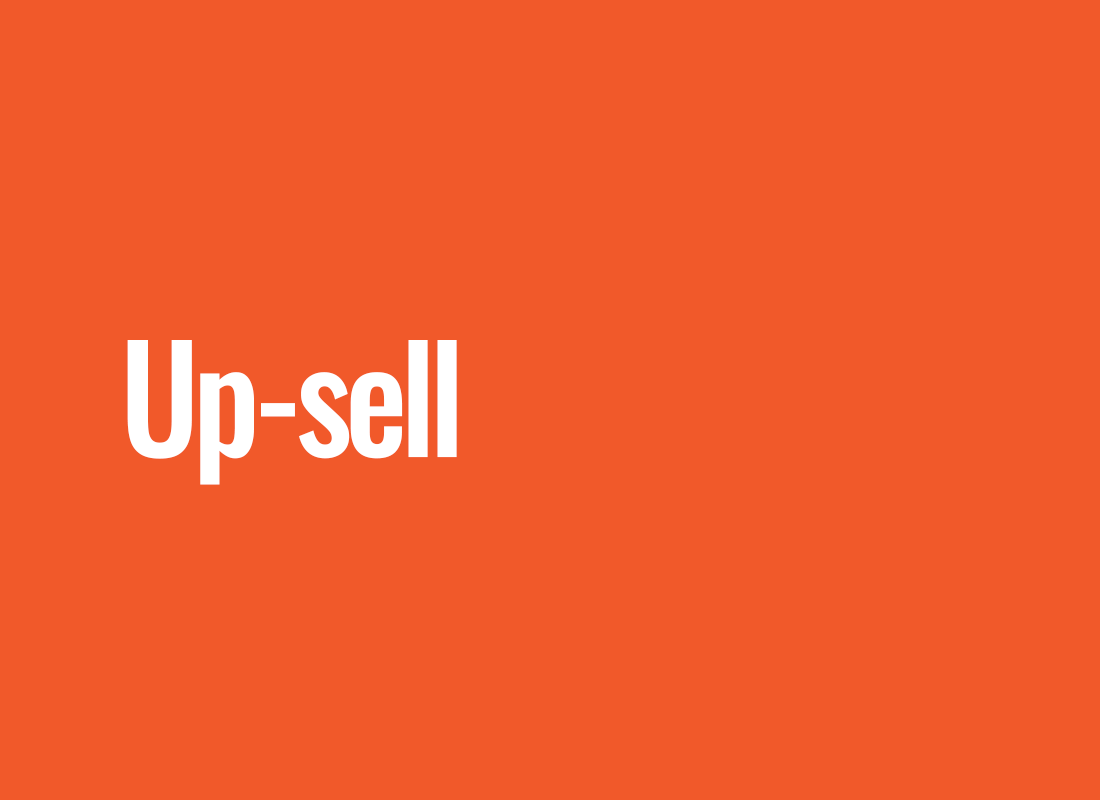Up-sell
Up-sell, in the context of e-commerce and marketing, refers to a sales technique aimed at persuading a customer to purchase a more expensive product, an upgrade, or an additional item to increase the cart's value. It operates on a simple principle – when a customer is already engaged in the buying process, they are more inclined to make additional purchases or replace their original choice with a more valuable product. Up-sell can apply to various aspects of sales, from physical products to subscriptions and services. The key to effective up-selling is to offer added value, translating into tangible benefits for the customer while simultaneously increasing revenue for the seller.
The Power of Up-sell in E-commerce
Modern markets are saturated with competition, leading companies to seek increasingly effective ways to boost their revenues. One of them is up-selling, which, when used correctly, can bring significant benefits to both the seller and the customer.
The first and most crucial step in the up-sell process is understanding the customer's needs. Only then can a product or service be proposed that genuinely meets those needs. In other words, up-sell is not about pressuring the customer into buying something they don't need. Instead, it focuses on presenting the customer with added value that exceeds their expectations.
Technology plays a key role in effective up-selling. Sophisticated algorithms used in online stores analyze user behavior, purchase history, and preferences to automatically suggest products that best meet their needs. Thus, up-sell becomes more personalized and effective.
However, up-selling is not a technique confined to the online world. In traditional brick-and-mortar stores, sellers often employ up-sell by suggesting to customers higher-quality products that may provide more benefits compared to the initially selected items. Though the methods vary, the goal is the same: to deliver greater value to the customer while increasing the transaction's worth.
Up-sell in Action
1. Up-sell in Online Stores
Many electronics sellers utilize up-sell, offering customers extended warranties, accessories, or a higher version of the product. For example, when purchasing a television, a customer may receive an offer to buy a professional sound system at a promotional price. This gives the customer a better product experience, and the seller increases the order's value.
2. Up-sell in Restaurants
Restaurants often make use of up-sell, encouraging guests to choose a higher-grade wine or additional appetizers. For instance, a waiter may suggest an exclusive type of wine that pairs perfectly with the chosen dish. The satisfied customer is more likely to return, and the restaurant gains additional income.
3. Up-sell in the Hotel Industry
Hotels frequently offer packages with additional services like spa treatments, meals, or tours. A client booking a standard room may receive an attractive offer for a package with a romantic dinner. Up-sell in this case not only increases the hotel's income but also ensures unforgettable experiences for the customer.
Up-sell as a Tool for Building Customer Relationships
Up-selling is not merely a tool for increasing revenue. It is also a way to build a lasting relationship with the customer by providing value that exceeds their expectations. Customer satisfaction and long-term loyalty are often the result of a well-executed up-sell process.
In the digital era, up-selling is easier and more personalized than ever before. Using data and AI technology to analyze customer behavior can lead to a more effective and individualized up-sell process, with benefits for both the seller and the customer.
Up-sell is a powerful tool in every seller's arsenal. If applied wisely, considering the customer's needs and expectations, it can lead to increased revenues, enhanced customer satisfaction, and brand loyalty. Up-sell is not just a sales strategy; it is a philosophy that puts the customer and their needs first.




